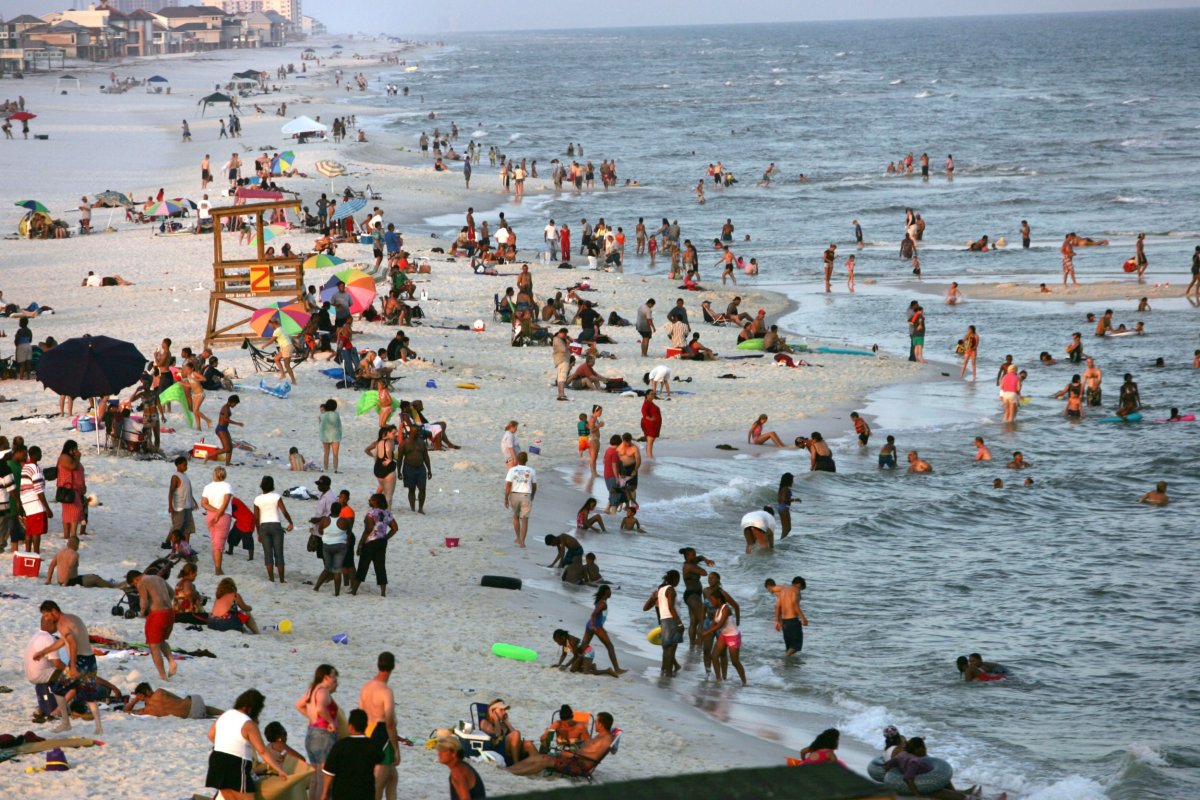Purple flags were flying at beaches along the Florida coastline Wednesday to indicate that potentially hazardous marine life could be lurking in the water. Lifeguards at Pensacola Beach posted to Facebook to warn potential beachgoers that while the surf was calm Tuesday, there were sea lice in the water that could sting those who encounter them.
Sea lice, sometimes also referred to as "seabather's eruption," are fairly common off the coast of Florida during the summer months. There are two types of sea lice: One that appears in fresh water; and the marine version, which is caused by larval jellyfish, the Florida Department of Health told Newsweek. The department doesn't track cases of sea lice.
The little creatures release stinging cells that can get stuck on skin or in hair and can cause a highly irritating rash that is accompanied by a stinging sensation.
The organisms sit on the water and are as small as a pinhead or speck of pepper, according to the Florida Department of Health. They can get trapped between a swimmer's skin and bathing suit and end up causing irritation. Each of the little organisms can cause upwards of 200 stings.
It can take anywhere from four hours to a day for the acne-like rash to completely appear. Swimmers in Palm Beach County and Northern Broward County are the most likely to get the rash from the pests because of the way the Gulf Stream passes close to the shore in that area.
The rash—a form of dematitis—usually subsides in a week or less, but it can be accompanied by other symptoms including nausea, vomiting, headache, muscle spasms and more. Those who contract the rash or come in contact with the sea lice should be sure to wash their bathing suit and dry it with high heat to make sure there are no leftover sea lice.
Because the rash is a form of dermatitis, it can be treated as any dermatitis rash would be. The use of an antihistamine can help, as can a hydrocortisone cream or calamine lotion. Cool compresses can be applied as well to ease inflammation.
Florida has seen thousands of beach-goers stung by jellyfish so far this season. Over the weekend nearly 500 people were stung, bringing the grand total of stings to almost 4,000. Lifeguards have treated large numbers of swimmers each day for the stings that can cause a wide range of symptoms but that are generally not life-threatening. It's possible that the jellyfish will stay in the area for the duration of the summer as it could take a strong current to take them elsewhere, The Daytona Beach News-Journal reported.

Uncommon Knowledge
Newsweek is committed to challenging conventional wisdom and finding connections in the search for common ground.
Newsweek is committed to challenging conventional wisdom and finding connections in the search for common ground.
About the writer
Nina was a breaking news reporter. She previously worked at Business Insider, The Boston Globe, and Boston.com.
To read how Newsweek uses AI as a newsroom tool, Click here.








